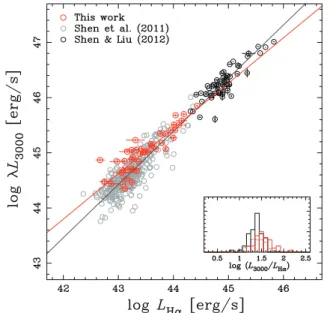A comparative analysis of virial black hole mass estimates of moderate luminosity active galactic nuclei using Subaru/FMOS
Texto completo
Figure




Documento similar
In this article we compute explicitly the first-order α 0 (fourth order in derivatives) corrections to the charge-to-mass ratio of the extremal Reissner-Nordstr¨ om black hole
Furthermore, given the difficulty in obtaining reliable dispersion measurements from survey-quality spectra with limited S/N (e.g. Mejia-Restrepo et al. 2016), virial BH-mass
The difficulty stems from the fact that the measurement of orbits at the Galactic center requires understanding 5 major components: (1) the astrophysical content near the black
In this paper, we investigate the statistical rela- tionship between the observed size (stellar half-light or half-mass radius) of galaxies and the inferred size (virial radius)
Therefore, by an asymptotically flat, static and spherically sym- metric black-hole solution we mean a solution of the equations of motion of the corresponding theory for all
of Hubble type, and galaxy stellar mass, M ?. The goals are: 1) to characterize in detail the radial structure of stellar population properties of galaxies in the local universe; 2)
Using ground-based data, meteorological observations, and atmospheric environmental monitoring data, a comparative analysis of the microphysical and optical properties, and
We construct a one-loop effective metric describing the evaporation phase of a Schwarzschild black hole in a spherically symmetric null- dust model.. This is achieved by quantising